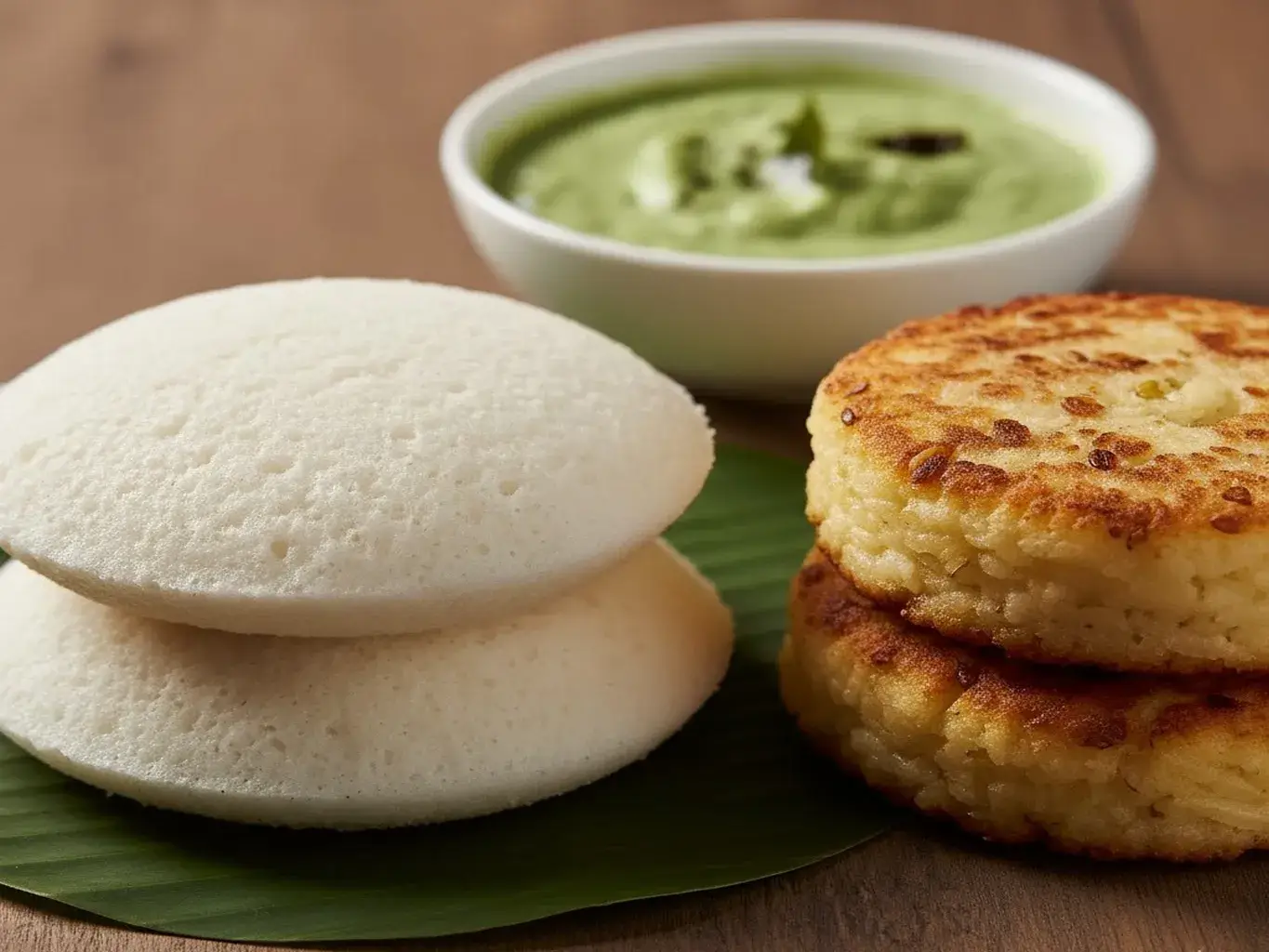South Asian rice cake crossword solvers are looking for IDLI. These soft, steamed cakes are a breakfast staple from South India. Known for their fluffy, slightly tangy flavor and porous texture, idlis are perfect for dipping into savory chutneys and sambars. This gluten-free treat is both a puzzle answer and a delicious, healthy meal.
WHY YOU WILL LOVE HOMEMADE IDLI
Making your own South Asian rice cake might seem daunting, but the rewards are immense.
- First, the flavor of freshly steamed idli is far superior to any store-bought version, with a complex, pleasant sourness from fermentation.
- Furthermore, the process, while requiring some patience, is wonderfully simple and meditative.
- Additionally, idlis are a incredibly healthy and digestible meal, perfect for a light dinner or a revitalizing breakfast.
- Ultimately, the proud feeling of pulling a perfectly steamed batch of these fluffy cakes from your own kitchen is a joy every food lover should experience.
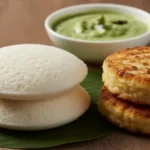
Savory South Asian Rice Cake Crossword: The Delicious Answer is Idli!
- Total Time: 30 minutes
- Yield: 12–16 idlis 1x
- Diet: Vegetarian
Description
Soft, fluffy South Asian-style steamed rice cakes (idli-style) made from a fermented rice and lentil batter light, versatile, and perfect for breakfast or snacks.
Ingredients
- 2 cups parboiled rice (idli rice) or short-grain rice
- 1/2 cup split urad dal (skinned black gram)
- 1/2 tsp fenugreek seeds (methi)
- 1 tsp salt (adjust to taste)
- Water for soaking and grinding
- Cooking oil or ghee for greasing idli molds or a steamer
Instructions
- 1. Rinse the rice and urad dal separately until the water runs clear. Drain.
- 2. Soak the rice in enough water for 4–6 hours. Soak the urad dal and fenugreek seeds together for 4–6 hours.
- 3. Drain the urad dal and fenugreek and grind them in a wet grinder or high-speed blender with a little water to a smooth, fluffy batter. Transfer to a large bowl.
- 4. Grind the soaked rice with minimal water to a slightly coarse, smooth batter (a little graininess is fine). Combine with the urad dal batter.
- 5. Stir in salt and mix the combined batter thoroughly by hand or with a spoon until slightly aerated. The batter should be thick but pourable.
- 6. Cover the bowl and ferment the batter in a warm place for 8–12 hours or until it has risen and is bubbly (fermentation time varies with temperature).
- 7. Once fermented, gently stir the batter. Grease idli molds or small ramekins lightly with oil or ghee.
- 8. Spoon batter into molds about three-quarters full. Bring water to a boil in an idli steamer or a large pot with a steaming rack.
- 9. Steam the idlis for 10–15 minutes (depending on size) until a toothpick inserted comes out clean and the tops are set.
- 10. Remove molds from the steamer and let sit for 2 minutes. Unmold the idlis and serve hot with chutney, sambar, or a drizzle of ghee.
Notes
- For a softer texture, use parboiled idli rice; a 4:1 ratio of rice to urad dal is traditional but can be adjusted.
- If your kitchen is cool, ferment the batter in a warm oven (oven light on) or near a warm appliance.
- Leftover batter can be refrigerated for up to 48 hours; use to make dosa or steamed snacks.
- For variety, mix in finely chopped vegetables, spices, or herbs before steaming to create savory variations.
- Prep Time: 15 minutes
- Cook Time: 15 minutes
- Category: Breakfast / Snack
- Method: Steaming
- Cuisine: South Asian
Nutrition
- Serving Size: 2 idlis
- Calories: 150
- Sugar: 0g
- Sodium: 200mg
- Fat: 2g
- Saturated Fat: 0.5g
- Unsaturated Fat: 1g
- Trans Fat: 0g
- Carbohydrates: 30g
- Fiber: 1g
- Protein: 5g
- Cholesterol: 0mg
Keywords: idli, rice cake, steamed cake, South Indian, fermented batter
GATHERING YOUR AUTHENTIC SOUTH ASIAN RICE CAKE CROSSWORD INGREDIENTS
The ingredient list for this South Asian rice cake is beautifully short, but each component is essential. For the most authentic result, try to find the specific lentils and rice.
For the Idli Batter:
- Idli Rice or Parboiled Rice: 2 cups. This specific short-grain rice creates the perfect soft texture. Do not use basmati or jasmine rice.
- Urad Dal (Split Black Gram): 1/2 cup. These hulled, white lentils are the key to fermentation and fluffiness. They are non-negotiable.
- Fenugreek Seeds (Methi): 1/2 teaspoon. This secret ingredient helps with fermentation and adds a subtle, complex flavor.
- Salt: 1 1/2 teaspoons, or to taste.
- Water: For soaking and grinding.
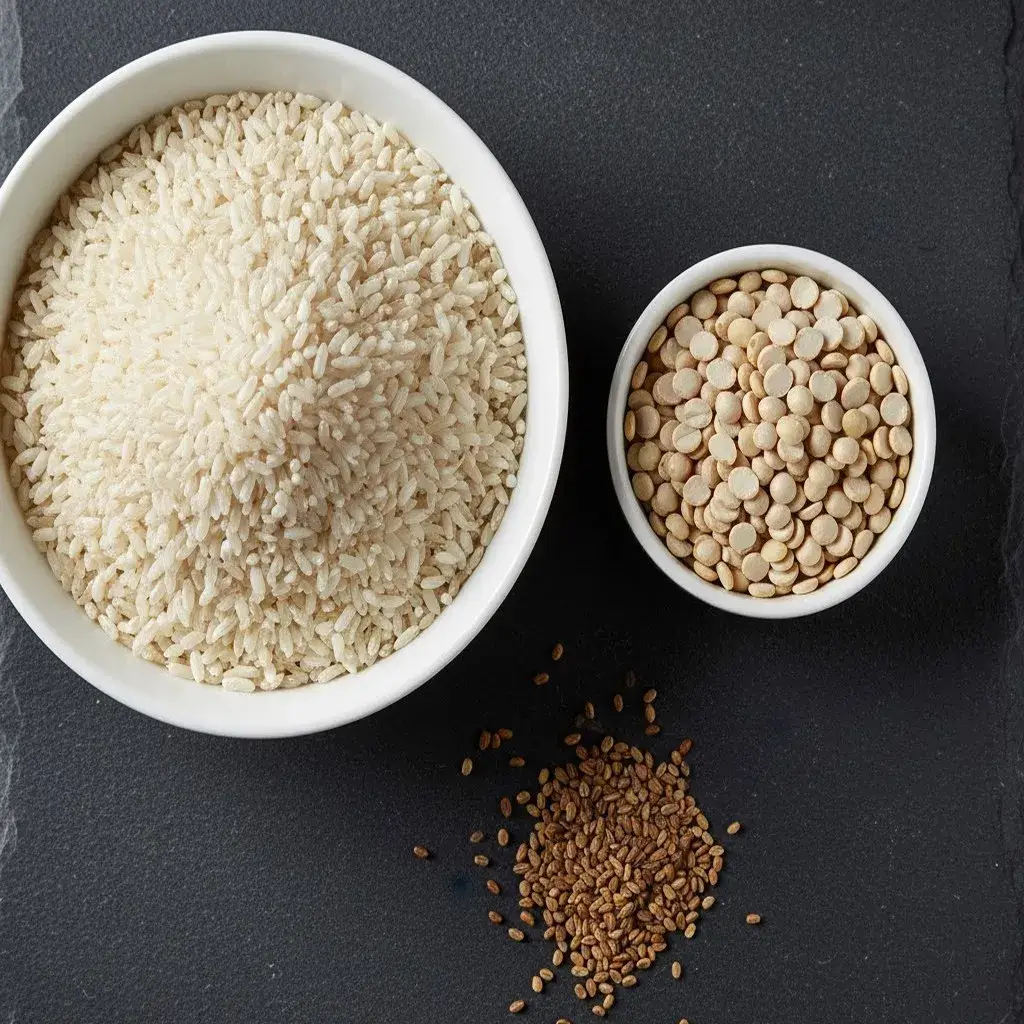
THE TOOLS YOU WILL NEED
You will need a few special tools to create this traditional South Asian rice cake.
- A high-powered blender or a traditional Indian wet grinder
- Large bowls for soaking
- A warm place for fermentation (like an oven with the light on)
- Idli steamer plates (or a small, shallow bowls that will fit inside your steamer)
- A large steamer pot or electric pressure cooker with a steam function
MAKING YOUR SOUTH ASIAN RICE CAKE CROSSWORD BATTER STEP BY STEP
The magic of this South Asian rice cake lies in the fermentation process. Do not rush these steps.
SOAK THE RICE AND LENTILS
First, in separate bowls, thoroughly rinse the rice and the urad dal with fenugreek seeds. Then, cover them completely with fresh water and let them soak for a minimum of 6 hours, or ideally overnight. This softens the grains and lentils, making them easier to blend into a smooth paste.
GRIND TO A SMOOTH PASTE
- Next, drain the water from the urad dal and fenugreek seeds.
- Add them to your blender with just enough fresh water to help it blend. Grind until the mixture is extremely smooth, light, and fluffy.
- This can take 15-20 minutes. Transfer this to a very large bowl.
- Now, drain the rice and grind it separately, adding water as needed, until it reaches a smooth yet slightly gritty consistency, similar to semolina. Combine the ground rice and dal mixtures in the large bowl.
THE CRUCIAL FERMENTATION STAGE
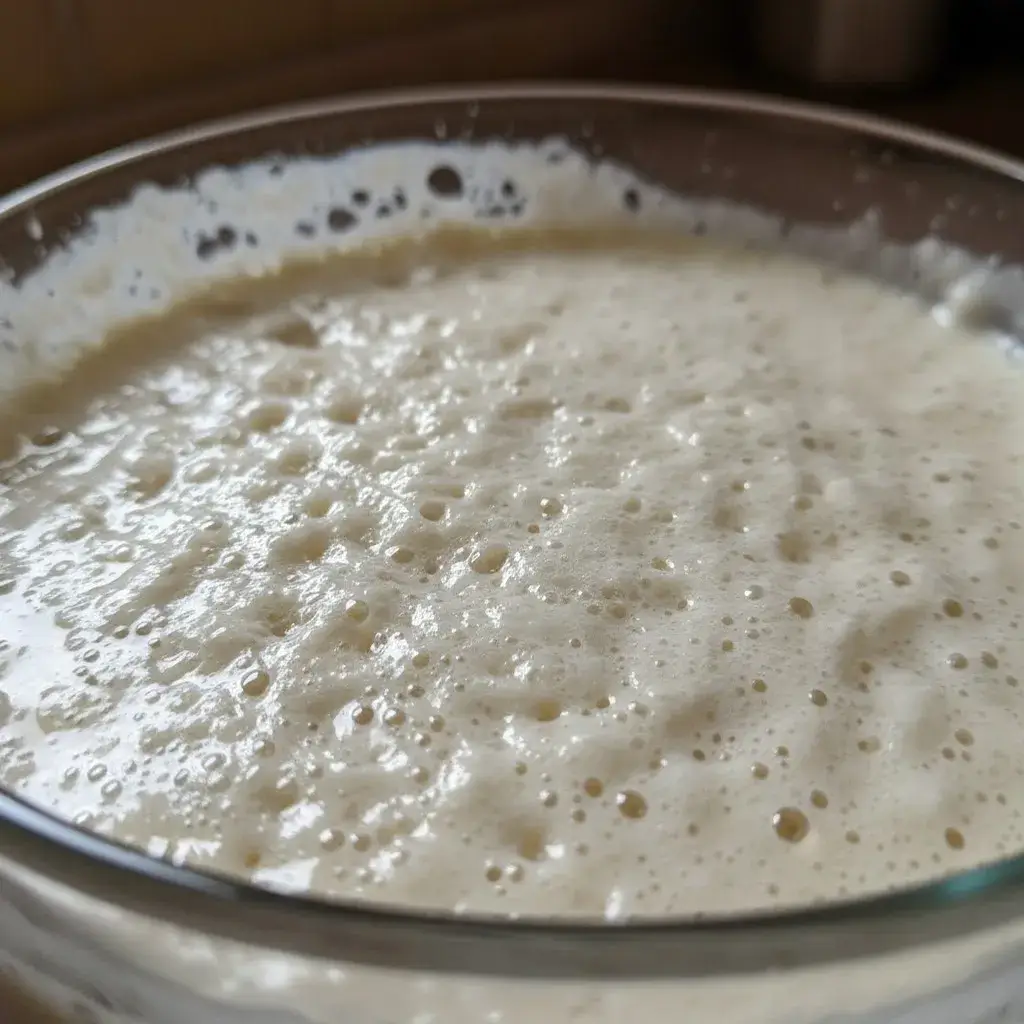
Now, add the salt and whisk the batter vigorously for a few minutes. This incorporates air and helps kickstart fermentation. Cover the bowl with a lid or cloth and place it in a warm, draft-free spot for 8-12 hours. In cold climates, your oven with the light on is perfect. The batter will almost double in volume and become airy and bubbly. Do not stir it after fermentation.
STEAM TO PERFECTION
When you are ready to cook, gently grease your idli plates. Do not stir the batter; instead, ladle it directly into the molds. Fill them about 3/4 full. Steam the idlis for 10-12 minutes over medium-high heat. You will know they are done when a toothpick inserted into the center comes out clean.
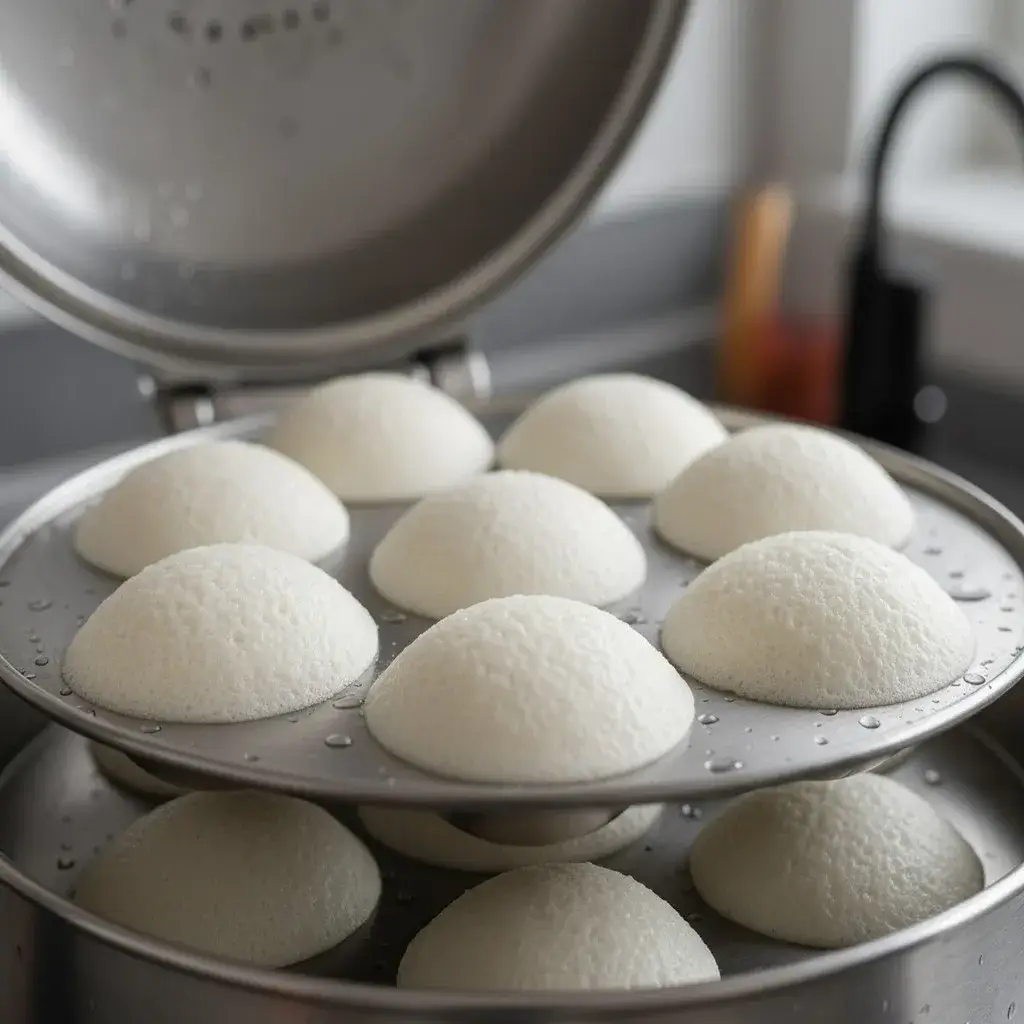
SERVE IMMEDIATELY
Finally, let the idlis cool for a minute before carefully removing them from the molds with a spoon. Serve your homemade South Asian rice cake immediately while they are hot and fluffy.
PRO TIPS FOR THE FLUFFIEST SOUTH ASIAN RICE CAKE CROSSWORD
A few simple tricks will ensure your idlis are restaurant-quality.
- Grinding is Key: The urad dal must be ground to a super-smooth, airy consistency. This is the foundation for a fluffy idli.
- The Right Temperature: Fermentation is dependent on warmth. If your kitchen is cool, the batter will take longer to rise.
- Don’t Peek During Steaming: Resist the urge to open the steamer lid during the first 10 minutes, as this can cause the idlis to collapse.
- The Water Test: Before steaming, ensure your steamer has a vigorous, rolling boil. This creates the instant burst of heat needed for the idlis to puff up.
DELICIOUS VARIATIONS TO TRY
Once you master the classic, you can explore other versions of this versatile South Asian rice cake.
- Rava Idli: A quick version made with semolina instead of fermented rice and lentils.
- Kanchipuram Idli: A spiced version with peppercorns, ginger, and cumin seeds steamed in banana leaves.
- Stuffed Idli: Place a spoonful of spiced potato filling in the center of the batter before steaming.
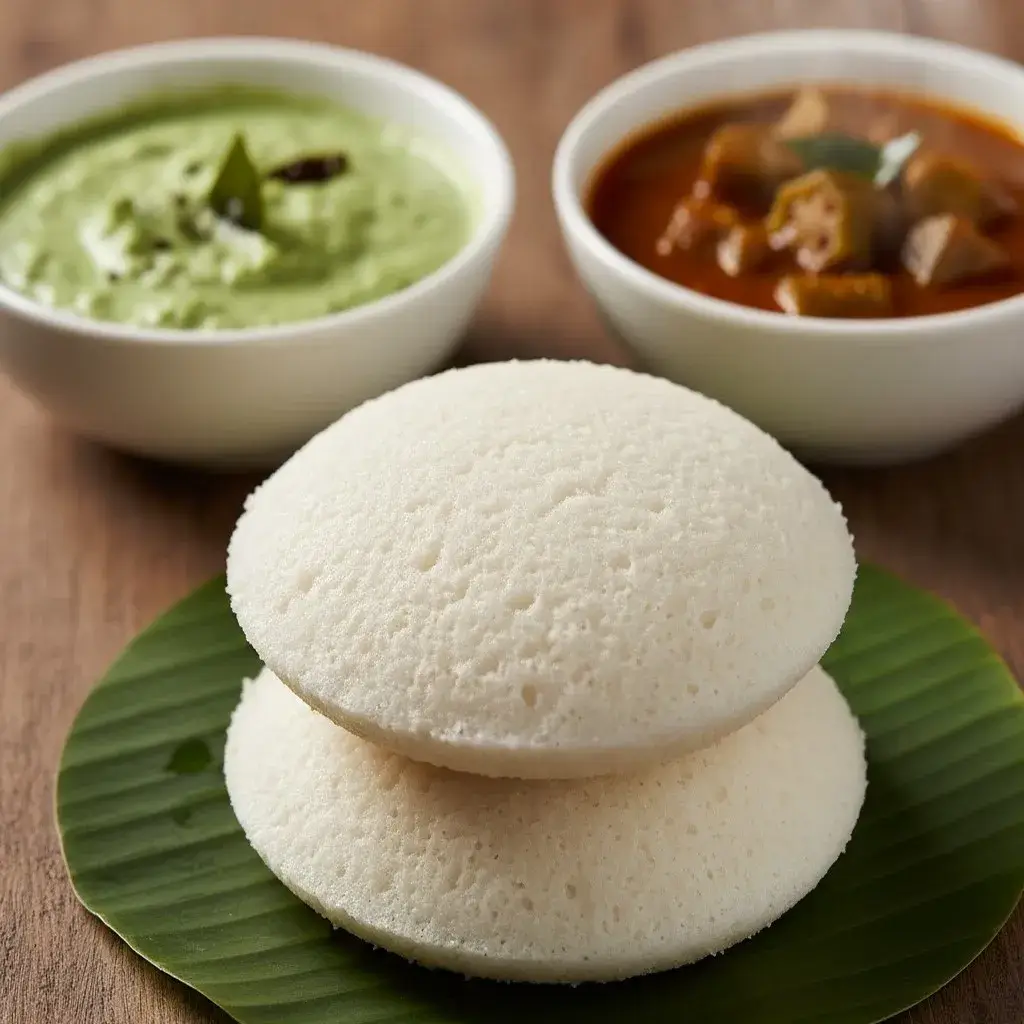
STORING AND REHEATING YOUR IDLI
South Asian rice cake is best fresh, but they store well.
- Room Temperature: They can be kept covered for a few hours after steaming.
- Refrigeration: Store leftover idlis in an airtight container in the fridge for up to 5 days.
- Freezing: They freeze beautifully for up to 3 months. Thaw and re-steam or pan-fry.
- Reheating: Always re-steam them for the best texture. You can also pan-fry them into a crispy treat.
TROUBLESHOOTING COMMON IDLI PROBLEMS
My idlis are flat and dense.
This means your batter did not ferment properly. This could be due to cold temperatures, old urad dal, or not grinding the dal smoothly enough.
My idlis are too dry.
You may have used too much rice or over-steamed them. Ensure your ratio of rice to dal is correct and check for doneness at the 10-minute mark.
My batter did not rise.
This is almost always a temperature issue. Next time, place the bowl in an oven with the light on or in a warm water bath to encourage fermentation.
A CULINARY STORY FROM MY KITCHEN
My first encounter with this South Asian rice cake was not in a kitchen, but in a busy food court. I was intrigued by the soft, white discs served with vibrant green chutney and a dark, aromatic stew. One bite and I was hooked. The texture was like nothing I had ever experienced a cloud that melted in my mouth, carrying the flavors perfectly.
I became determined to recreate that magic at home. After many trials and a few dense, hockey-puck-like failures, I finally achieved that perfect, airy texture. The triumphant feeling of that first successful batch is a core memory for me, and it’s the feeling I hope this recipe gives to you.
YOUR FINAL CHECKLIST BEFORE YOU START
Before you begin, just do a quick scan:
- Rice and urad dal are measured and ready for rinsing.
- Blender is clean and ready.
- You have a large, clean bowl for fermentation.
- Your idli steamer is accessible.
SOUTH ASIAN RICE CAKE CROSSWORD FAQS
What do you call a South Indian rice cake?
The most common and classic South Indian rice cake is called an Idli. It is a staple breakfast food throughout South India and Sri Lanka.
What is the crossword clue for cake type 5 letters?
For a generic “cake type” clue with 5 letters, common answers include “LAYER” or “IDLI” if the puzzle has a South Asian theme. For “South Asian rice cake,” the 5-letter answer is almost always IDLI.
What is another name for a rice cake?
While “rice cake” often refers to the crisp, puffed Western snack, in the context of South Asian cuisine, it typically refers to Idli or its similar relative, Dosa (a fermented crepe). Another name could be “Puttu,” a cylindrical steamed rice cake from Kerala.
Is putu piring sweet or savory?
Putu piring is a sweet South Asian rice cake. It is a traditional Malaysian and Singaporean snack made from rice flour, filled with palm sugar, and steamed, often served with grated coconut.

